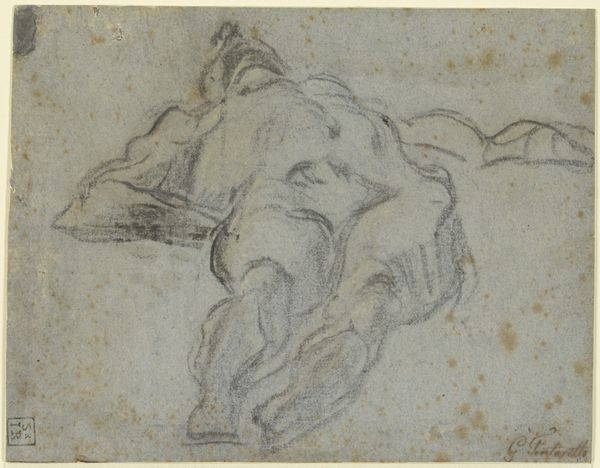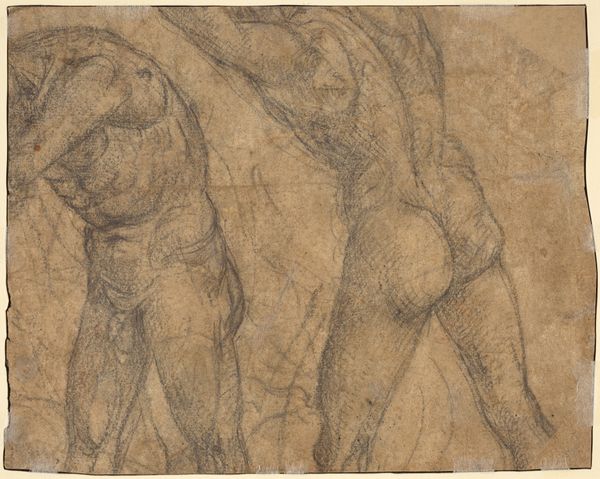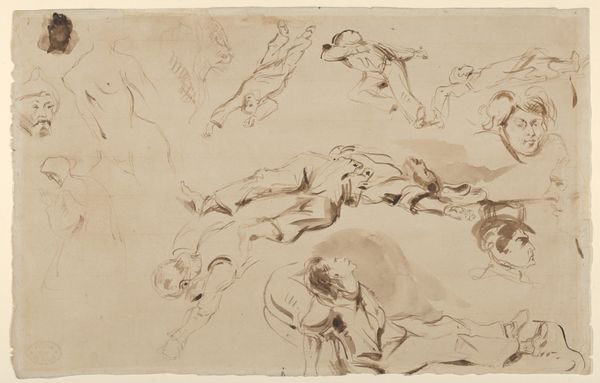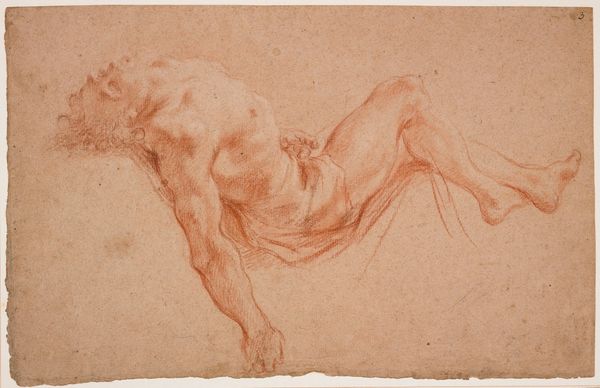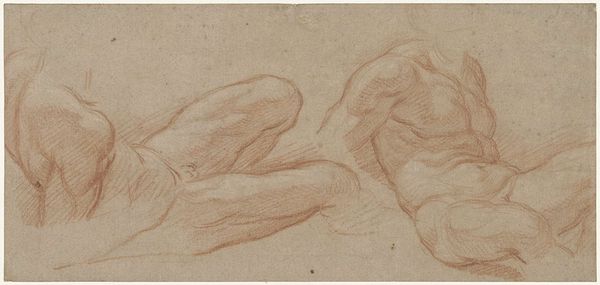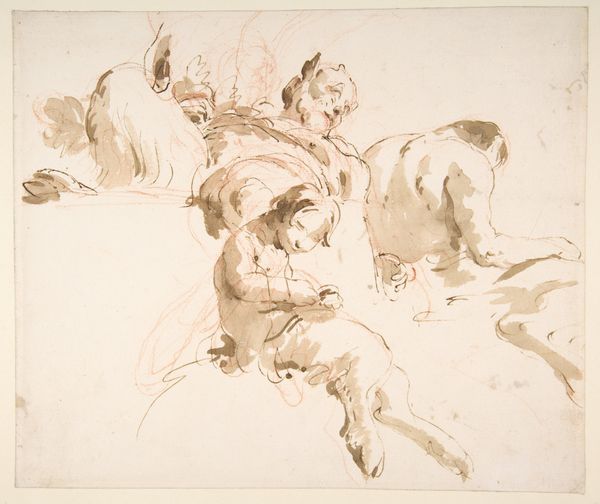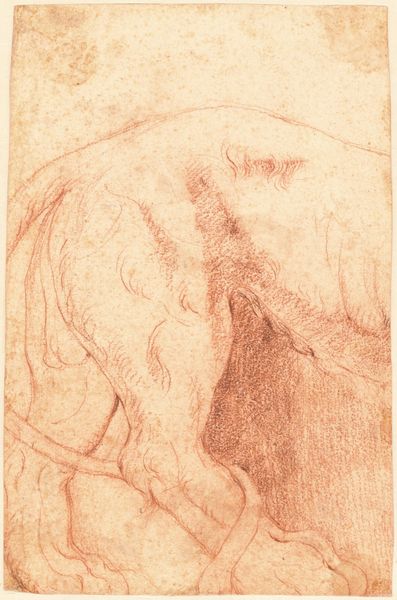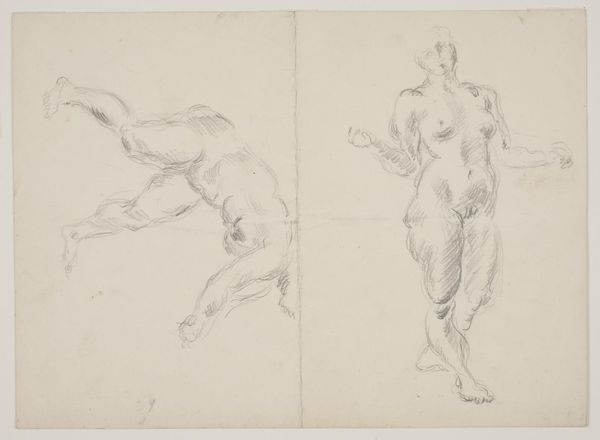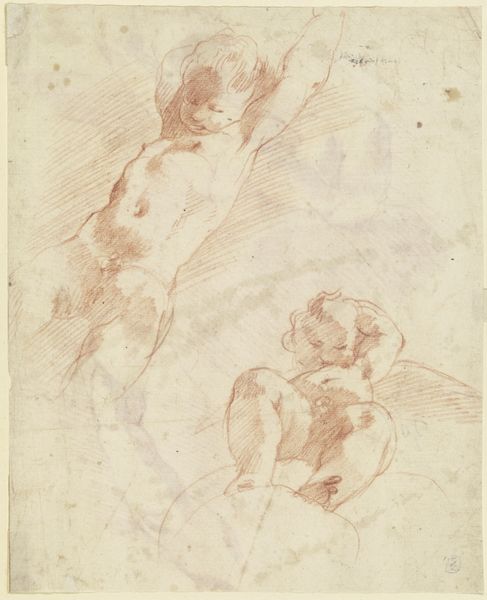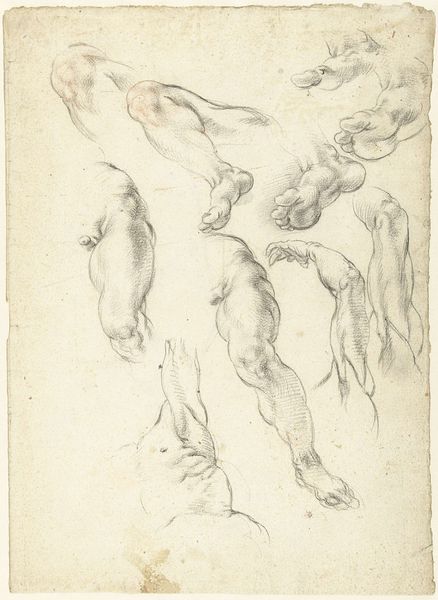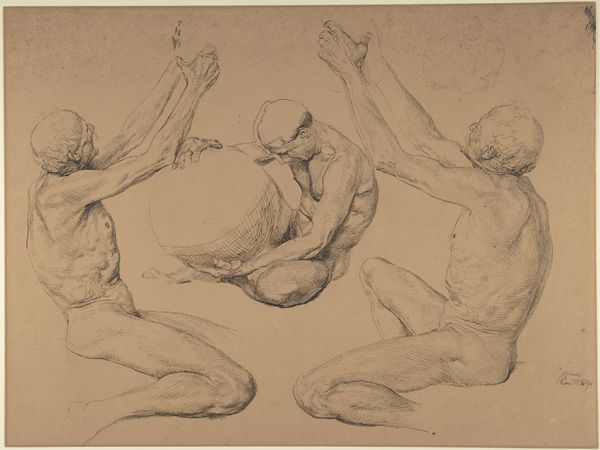
Laocoon. Studies of Laocoon's left arm and of the back of his torso seen from the left and from below 1628 - 1630
0:00
0:00
drawing
#
drawing
#
baroque
#
figuration
#
11_renaissance
#
history-painting
#
academic-art
Dimensions: 231 mm (height) x 348 mm (width) (bladmaal)
Curator: What strikes me immediately about this drawing is the incredible sense of tension in the figure. It's rendered in sanguine, giving it a warm, almost fleshy quality, yet the subject matter is so fraught. Editor: You're right, there’s an undeniable physical struggle being depicted here. We're looking at "Laocoon. Studies of Laocoon's left arm and of the back of his torso seen from the left and from below" by Willem Panneels, created sometime between 1628 and 1630. It is currently held in the Statens Museum for Kunst. This drawing is not merely a study of form; it's embedded in a narrative laden with societal warnings about defying authority. Curator: Absolutely, and I think that tension you mentioned translates into the broader reception of the sculpture it depicts, and serves as a vehicle for academic art in the Renaissance. How the reproduction of the work is then absorbed into art institutions further down the line. Editor: Precisely! It's more than just about mythological suffering. We need to address Laocoon’s role within shifting cultural and intellectual currents. He defied the gods and warned his people; his punishment can then be framed as a silencing tactic of those speaking out against power, particularly pertinent in our current sociopolitical moment. Curator: Considering the role museums played in disseminating and legitimizing certain historical and political narratives, drawings like these weren't simply artistic exercises. They actively contributed to constructing and reinforcing certain societal power dynamics, even the violence done to marginalized peoples, that have a cultural stronghold today. Editor: I concur. By studying and recreating classical forms, artists of the time were implicitly validating the values those forms represented—order, reason, the suppression of dissent. Even the very act of anatomical study held profound implications about what bodies mattered and how they should behave in public and political space. Curator: Looking closer, the hatching and cross-hatching bring form to the figure, which at once allows us to think critically, as well as appreciate the craft and skill put into representing struggle and perhaps what we must be conscious of reproducing. Editor: Indeed. Examining Panneels' study prompts essential questions. Who gets to control the narrative, how do institutions support, reject, or adapt them, and whose voices are muted in the process?
Comments
No comments
Be the first to comment and join the conversation on the ultimate creative platform.

